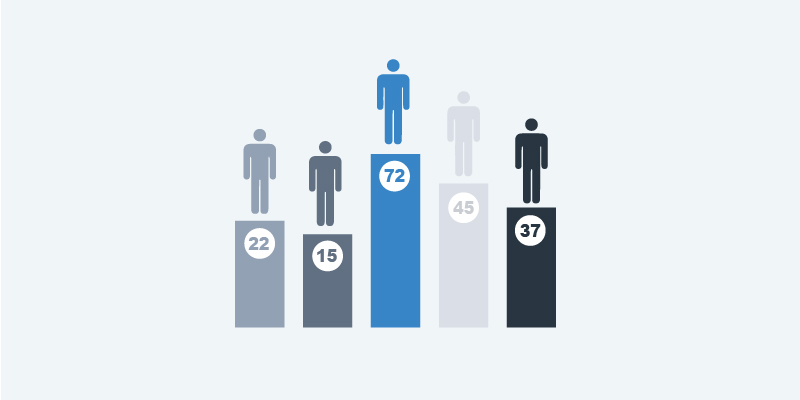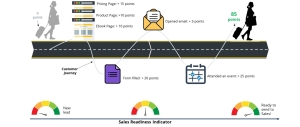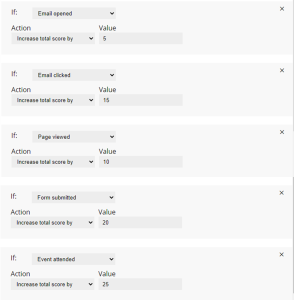The ClickDimensions lead scoring model uses a point range of 1-100. Points are assigned to actions that reflect the typical buyer journey. Behaviors that indicate more serious buyer intent warrant a higher point value, while early-stage actions might be assigned a much lower point value. Scorable actions include:
.
- Email clicked
- Email opened
- Form Submitted
- Form Submitted Failed
- Website Visited
- Page view
- Event Registered
- Event Attended
- Unsubscribed Emails
- Opportunity Created
- Opportunity Lost
- No Engagement within a set timeframe
This process is subjective, and there’s no single right or wrong approach. The essential condition for a scoring model to succeed is consensus on which buyer behaviors align with the best prospects, based on the analysis your cross-functional team conducted.
For example, let’s say the following actions rank in your top four buyer behaviors:
.
- Form submitted
- Page viewed
- Event attended
- Website visited
If the analysis indicated that event attendance and form submissions were common trends shared by the majority of recent Closed Wins, these actions should be assigned higher point values in the model.
Configuring your scoring model would look like this:
The ClickDimensions scoring model can be applied to a contact, or a lead. We suggest that when a business uses both entities and wants to score activities demonstrated by both leads and contacts, these should be administered through separate models. Again, the idea is to align with your business model, and there’s not a uniformly agreed to best practice regarding this rather controversial topic.
Unfortunately, we’ve all had prospects go cold on us, and it’s helpful to filter those out of the “hot prospect” pool you want your sales team to focus on. This is accomplished by invoking a so-called degradation rule. For example, if a contact has not engaged in any of the buying behaviors you’ve included in your scoring model in the last six months, you can reset their score to 1, as follows:
You may want to incorporate other behaviors that indicate lack of buyer interest into your scoring model. These can be assigned negative values to decrement from a lead’s cumulative score, including actions such as opportunity lost, form submitted failed, and unsubscribed.
How does this all pan out? One of the most impactful outcomes of a sound scoring strategy is the ability to alert a sales rep when the prospective customer is in “ready to buy” mode. According to research from IRC Sales Solutions, speedy follow up is a critical factor in any demand generation process. A prompt response from a prepared sales rep, within the first 5 minutes after a lead indicates strong interest, can result in a 9 fold increase in conversion rates. Automating this process involves the final two aspects of your scoring methodology:
.
- Step 4: The key point of consensus your scoring committee must agree to is a threshold score. Leads which have achieved this minimum cumulative point value (indicative of a ‘hot’ lead in ‘ready to buy’ mode) should be routed to sales for timely follow up. By creating a workflow based on the lead scoring trigger, a sales owner can be automatically assigned once a contact/lead reaches the threshold score. Lead scoring triggers can also be effective earlier in the buyer journey, to route a ‘warm’ contact into a designated nurture program once it’s achieved an interim score. This can be a huge time-saver for marketing, automating targeted outreach with curated content. Both use cases for triggers help increase lead velocity through the funnel, accelerate the sales cycle and improve overall ROI for the demand generation program.
.
- Step 5: Clearly, lead scoring should not be thought of as a static model, but rather an on-going process that should be reviewed from time to time to ensure the point values selected in the past continue to remain valid given current lead behavior. Establishing a set timeline to reconvene the scoring committee on a quarterly or semi-annual basis sets appropriate expectations up front.
While developing a lead scoring strategy certainly involves a fair amount of collaboration, the end result generates a more robust pipeline, with both sales and marketing teams aligned on a shared target. And that’s a win-win scenario for any company.
Want to learn more about lead scoring? Please contact our Sales team.












